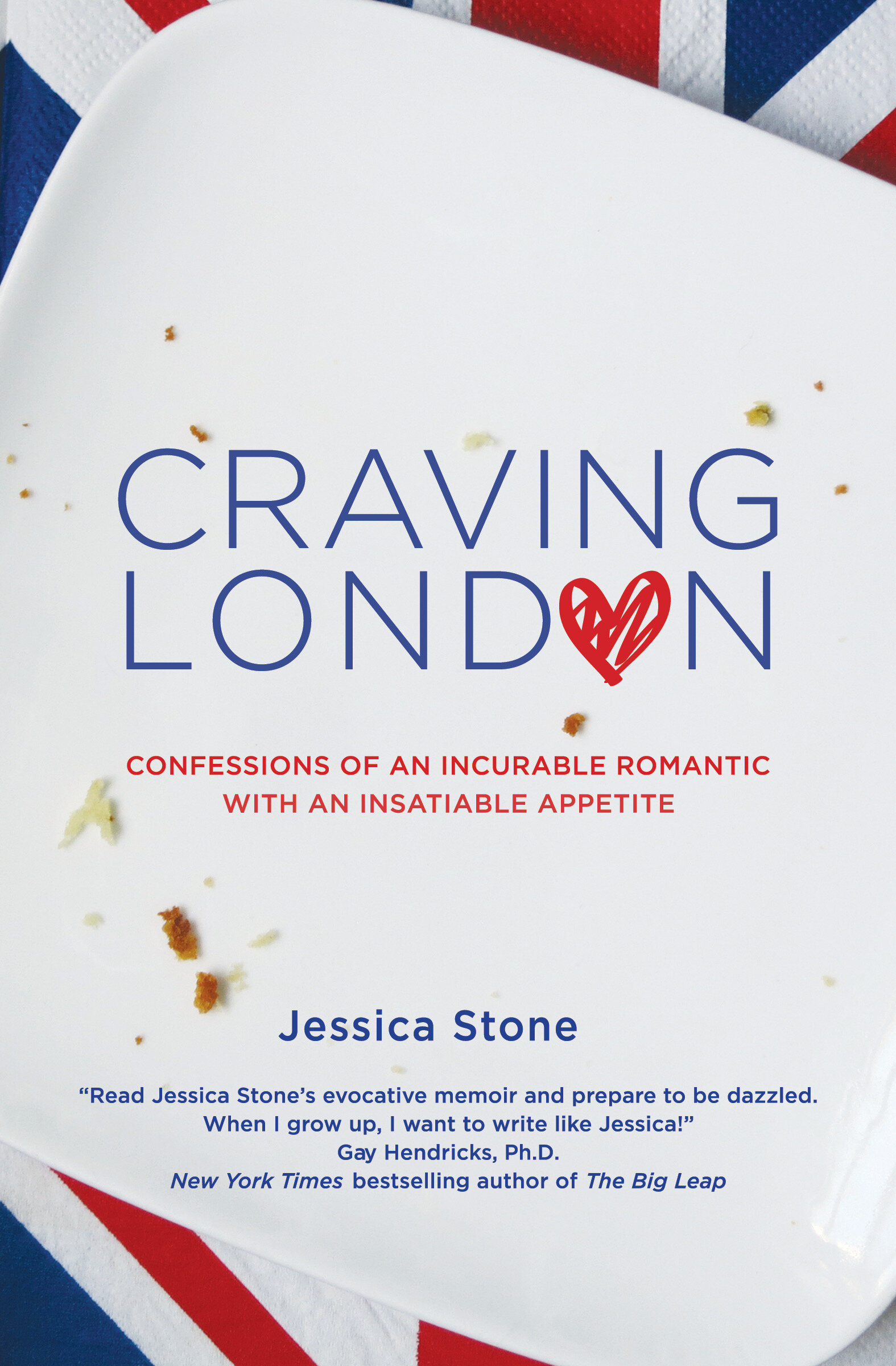"To Cook, or Not to Cook"
by Cindi Sutter, Founder & Editor Spirited Table® - content provided by Craving London by Jessica Stone. Copyright 2020 Jessica Stone.
“I promise I won’t spoil the ending, but for you food and drink junkies and those whose travel wanderlust is not happening right now, this is a heartfelt look at the way in which food and love come together. Sometimes in the most unusual ways. Plus, Jessica shares her recipes like the one below throughout this adventurous book.” Cindi Sutter
Jessica Stone has spent a hearty chunk of her time plotting what to eat next and pondering the mysteries of love, both of which come together in a lot of what she writes.
Jessica grew up in a Cuban family in Miami and studied journalism at New York University before moving to London in 2004, where she trained in patisserie at Le Cordon Bleu and wrote a blog that became the basis for Craving London. To afford city rents—and restaurants—she has worked as a copywriter on everything from dessert ads to dating advice.
Her articles have appeared in The Times, The New York Times, The Guardian, Restaurant Magazine, and Men’s Health. She lives in Pennsylvania with her son and a cat named Peppa.
"Jessica Stone beautifully captures the crazy ups and downs that come from being able to make seemingly anything happen...except the happy, healthy love she desires. She's a delicious, delightful writer whom you'll fall madly in love with over and over again." -Katherine Woodward Thomas, New York Times bestselling author of Calling in "The One"
An excerpt from from the chapter "To Cook, or Not to Cook"Craving London by Jessica Stone.
One of the things I love about London is that for the price of a cab home from the West End, you can fly to a different country in a few hours. But you can also eat like you’re in Italy tonight without any of the hassle.
One day, I was feeling a little nostalgic about Florence, where I’d spent those blissful weeks during graduate school becoming well-acquainted with both Renaissance art and the art of eating. I consoled myself and tried to appease my cravings by taking myself over to the West End for an Italian delicatessen jaunt.
I Camisa & Son on Compton Street in Soho was crammed with what seemed like every kind of dried pasta shape and rice variety out there, along with sweet organic cherry tomatoes, cheery pots of fresh basil, fat balls of buffalo mozzarella, handmade potato gnocchi, and fresh stuffed pasta. I’d love to have spent a few hours in there peeking into all the drawers and reading every single label, but the shop swarmed with real Italians who looked like they knew what they were doing. I grabbed a box of dried lasagne con spinaci that was at eye level and quickly paid up.
Zigzag down the road to Brewer Street, and you’ll find Lina Stores, where browsing for semolina is slightly less stressful. I asked the pleasant girl layering ravioli if she had skinny penne— without the ridges—and she pointed to a Barilla box by the window. I brought it over to her. Against my protests, she opened it to make sure I was buying the right one. And, what do you know—Pennette Lisce No. 69 was exactly what I was looking for.
I chatted with Tony, whose wife owns the shop, and I asked him where he likes to eat Italian food in London. “At home, my wife,” he said. “I am lucky.”
Here are some links to where you can buy the book:
https://www.amazon.com/Craving-London-Confessions-Incurable-Insatiable/dp/1735110205
https://www.indiebound.org/book/9781735110202
Cure the craving parmigiana
Serves two
It's rubbish, not trash. Trolleys, not shopping carts. Bins, not baskets. My accent was still American, but if I wanted to get up to my seventh-floor flat, I'd better take the lift (elevator). Or else I'd be left standing on the pavement (that's "sidewalk" stateside).
Not long after I landed in Heathrow in that unforgiving winter of 2004, I embarked upon an intense, fruitless hunt for measuring cups. In the UK, cups are strictly used for drinking, not measuring. And so, exhausted, I settled on eyeballing quantities until later that year when I was happily reunited with the old Brooklyn kitchen stash I kept at my mother's house in Florida. In the intermittent period, I began my initiation into the nomenclature of the British food world.
Take, for example, the first time I tried to make guacamole in London. I searched high and low for cilantro before finally taking my nose to a bright green leaf labeled “coriander.” Aha! It also took a while to learn that when making pie crusts, the only Grahams you'll find in Britain are blokes (guys). Use Digestives instead, as unappetizing as that might sound.
Two of my favorite vegetables are zucchini and eggplant. In the UK: courgette and aubergine, respectively. And this is a recipe where, depending on the season, the vegetables are as interchangeable as their names have now become in my mind. You don't need to measure anything, and whichever side of the Atlantic you are on, you and yours will be eating in half an hour.
Ingredients
For the tomato sauce:
2 garlic cloves, peeled and very thinly sliced
A glug (about a tablespoon) of olive oil
16 oz can whole Italian plum tomatoes
Sea salt
Black pepper
For the vegetables:
2 zucchinis/courgettes OR 1 eggplant/aubergine
All-purpose flour (plain flour in the UK)—about one cup or 120 g (garbanzo flour makes an excellent gluten-free substitute here)
1 teaspoon sea salt
Pinch cayenne pepper
Dried herbs such as oregano, tarragon, and thyme
1 egg
Olive oil (enough to cover the bottom of the pan)
Black pepper
Extra virgin olive oil for drizzling
Dried pasta such as spaghettini or linguini (enough for two)
A handful of fresh basil leaves, chopped
Parmigiano Reggiano cheese for grating
Instructions
Heat the garlic and olive oil in a heavy saucepan over low heat for about five minutes until the garlic just begins to color. Watch closely; garlic burns easily.
Add the tomatoes, turn down the heat, and simmer for 20 minutes until the tomatoes are broken up. Season with salt, and grind in some black pepper.
Meanwhile, cook the pasta in plenty of boiling salted water until al dente.
Pour enough oil to cover the bottom of a heavy sauté pan and turn the heat up to medium high.
Cut your chosen vegetable diagonally into slices no more than ½-inch thick.
Shake a handful of flour onto a large plate, then add a good sprinkling of salt, the cayenne pepper, and enough dried herbs so you get a nicely speckled mix.
Lightly beat the egg in a bowl. Dip each vegetable slice into the egg and then into the flour mixture, coating both sides well.
When the oil is hot but not smoking, fry the vegetables in batches, turning once during cooking. When golden, transfer to a plate lined with paper towel.
By this time, everything will have cooked like a perfectly conducted orchestra. Drain the pasta, toss with the sauce, and transfer to serving plates. Layer the vegetables over. Sprinkle with the basil, grated cheese, and plentiful grindings of black pepper. Drizzle with extra virgin olive oil.


